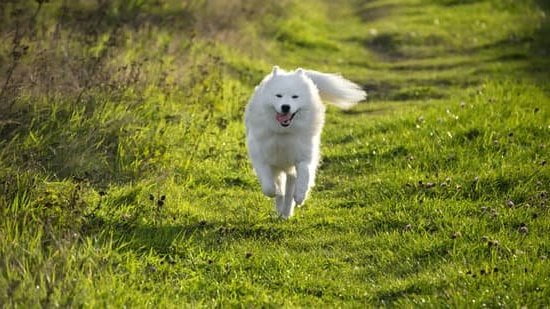Do you have a passion for working with dogs and want to learn how to become an off-leash dog trainer? In this article, we will explore the steps and skills needed to pursue a career in this rewarding field. Off-leash dog training involves providing dogs with the freedom to move and interact without the restriction of a leash, promoting better behavior and communication between pets and their owners.
As an off-leash dog trainer, you play a crucial role in helping dogs develop obedience, control, and communication skills that allow them to be off-leash in various settings. By understanding canine behavior and body language, trainers can effectively communicate with dogs and establish trust, resulting in improved responsiveness during off-leash training sessions. This unique approach not only benefits the dogs but also enhances the bond between pets and their owners.
To excel in off-leash dog training, individuals must become familiar with a variety of training methods such as positive reinforcement, clicker training, and leash training. The learning process involves undertaking courses, obtaining certifications, gaining practical experience, and acquiring essential equipment like long leads, remote collars, and treat pouches.
By mastering advanced techniques and addressing common behavioral issues like aggression and fear, off-leash dog trainers can provide effective solutions for pet owners seeking reliable off-leash control for their furry companions.
Understanding Dog Behavior
Canine Behavior Basics
Before delving into off-leash training, it is crucial for aspiring dog trainers to have a solid understanding of canine behavior and body language. Dogs communicate primarily through their body language, so being able to interpret their signals accurately is key to successful training sessions. Understanding how dogs express fear, joy, stress, and other emotions will help trainers navigate training sessions effectively.
Body Language Cues
Some common body language cues that trainers should be familiar with include wagging tails (indicating excitement), lowered ears (signaling fear or submission), and raised hackles (a sign of arousal or aggression). Additionally, understanding how dogs use their posture, facial expressions, and vocalizations to communicate can provide valuable insights during training sessions. By recognizing these cues, trainers can adjust their approach accordingly and create a positive training experience for both the dog and themselves.
Importance in Off-Leash Training
When transitioning to off-leash training, knowledge of canine behavior becomes even more crucial. Without the restriction of a leash, trainers must rely on their ability to read a dog’s body language to anticipate behavior and prevent issues before they escalate.
By understanding how dogs communicate through their movements and expressions, off-leash trainers can establish a stronger connection with their canine companions and effectively guide them through advanced training techniques.Overall, mastering the art of interpreting canine behavior is essential for anyone looking to become an off-leash dog trainer. By honing this skill, trainers can build better relationships with their canine clients, foster trust and communication during training sessions, and ultimately achieve success in off-leash training endeavors.
Training Methods
Positive Reinforcement
One of the most effective methods used to achieve off-leash control when training dogs is positive reinforcement. This method involves rewarding desired behaviors with treats, praise, or toys to encourage the dog to repeat those behaviors. When teaching off-leash commands, such as recall or stay, it’s essential to positively reinforce the dog’s response every time they obey. Consistency and patience are key when using positive reinforcement to train dogs off-leash.
Clicker Training
Clicker training is another popular method used by off-leash dog trainers to communicate with their canine companions effectively. The clicker serves as a marker for the precise moment the dog performs the desired behavior, followed by a reward.
This technique helps dogs understand exactly what behavior is being reinforced, making it easier for them to grasp off-leash commands. By pairing the sound of the clicker with rewards consistently, dogs learn to associate the click with a job well done.
Leash Training
While the goal of off-leash training is ultimately to have control without physical constraints, leash training plays a crucial role in building the foundation for off-leash control. Teaching dogs basic obedience commands like sit, stay, and heel on a leash sets a solid groundwork for transitioning into off-leash training.
Leash training also helps establish boundaries and expectations for dogs during their learning process. It’s important for aspiring off-leash dog trainers to master leash handling skills before progressing to more advanced off-leash techniques.
By mastering a combination of positive reinforcement, clicker training, and understanding how leash work translates into successful off-leash control, individuals can effectively learn how to become an off-leash dog trainer. Balancing these training methods while continuously practicing patience and consistency will pave the way for successful communication and trust-building between trainer and dog during off-leash sessions.
The Learning Process
To become a successful off-leash dog trainer, it is essential to understand the learning process involved in mastering this skill. One of the first steps towards becoming an off-leash dog trainer is to enroll in specialized courses and training programs that focus on canine behavior, training techniques, and handling skills. These courses provide aspiring trainers with the necessary knowledge and expertise to effectively train dogs off-leash.
Here Are Some Steps on How to Become an Off-Leash Dog Trainer
- Research and enroll in reputable dog training courses or programs that specialize in off-leash training techniques.
- Obtain certifications from recognized organizations such as the Certification Council for Professional Dog Trainers (CCPDT) to demonstrate your expertise and credibility as a dog trainer.
- Gain practical experience by working with a mentor or assisting experienced trainers during real-life training sessions to hone your skills and knowledge.
Furthermore, hands-on experience is crucial in becoming proficient in off-leash dog training. Practical experience allows trainers to practice their skills in a controlled environment under the guidance of experienced professionals. This hands-on approach helps trainers develop their communication skills, build trust with dogs, and effectively address behavioral issues that may arise during training sessions.
Additional Tips on How to Become an Off-Leash Dog Trainer
- Attend workshops, seminars, and conferences related to dog training to stay updated on the latest techniques and advancements in the field.
- Create a strong network within the dog training community by connecting with other trainers, veterinarians, and animal behaviorists for support and collaboration.
- Continuously educate yourself through reading books, watching online tutorials, and seeking feedback from colleagues to improve your skills as an off-leash dog trainer.
By following these steps and dedicating time and effort to learning the intricacies of off-leash dog training, individuals can embark on a rewarding career as a proficient and successful off-leash dog trainer.
Equipment and Tools
When embarking on the journey to become an off-leash dog trainer, it is essential to have the right equipment and tools to aid in your training sessions. Here is a list of some essential items that will help you achieve success in off-leash dog training:
- Long Leads: Long leads are crucial for practicing off-leash training in a controlled environment. They allow you to give your dog freedom while still maintaining control over their movement.
- Remote Collars: Remote collars, also known as e-collars, can be valuable tools for off-leash training. They provide a way to communicate with your dog from a distance, reinforcing commands and ensuring compliance.
- Treat Pouches: Treat pouches are convenient for carrying rewards during training sessions. Positive reinforcement through treats is an effective way to motivate and reward good behavior in off-leash training.
In addition to these items, other tools such as clickers for clicker training, targets for shaping behaviors, and interactive toys for engagement can also be beneficial in your off-leash dog training toolkit. Each tool serves a specific purpose in reinforcing positive behaviors and strengthening the bond between you and your furry trainee.
Remember that while having the right equipment is crucial, it is equally important to learn how to properly use these tools in conjunction with positive reinforcement techniques. Building trust and creating clear communication with your dog will be key components in achieving successful off-leash control. By incorporating these tools into your training sessions thoughtfully and responsibly, you can enhance the learning experience for both yourself and your canine companion.
Building Trust and Communication
Building trust and effective communication with dogs are crucial components of successful off-leash training. Dogs, like humans, thrive in environments where they feel safe and understood. Establishing a bond of trust with your canine companion is the foundation for achieving off-leash control and obedience. This involves creating a positive and respectful relationship built on clear communication and mutual understanding of expectations.
To become an off-leash dog trainer, it is essential to focus on developing a strong connection with the dogs you work with. This can be achieved through consistent training sessions, positive reinforcement techniques, and active listening to understand each dog’s unique personality and needs.
Effective communication involves using body language, vocal cues, and rewards to convey your expectations clearly to the dog. By building trust through bonding activities, engaging exercises, and rewarding good behavior, you can establish a solid relationship based on trust and respect.
One key aspect of building trust and communication with dogs during off-leash training is practicing patience and understanding. Dogs may exhibit fear, anxiety, or confusion when learning new behaviors or commands off-leash. It is important for the trainer to remain calm, patient, and supportive throughout the training process. By showing empathy towards the dog’s struggles and celebrating their successes, you can create a positive learning environment that promotes trust and cooperation between you and your furry trainee.
| Aspect | Description |
|---|---|
| Effective Communication | Using body language, vocal cues, rewards |
| Patience | Remaining calm during training sessions |
| Bonding Activities | Engaging exercises to build trust |
Handling Behavioral Issues
As an off-leash dog trainer, being equipped to handle common behavioral issues like aggression, fear, and disobedience is crucial for a successful training session. Understanding the root cause of these behaviors is the first step in addressing them effectively. Aggression in dogs can stem from fear, dominance, or territoriality. By identifying the trigger and working on desensitization and counter-conditioning techniques, trainers can help their canine clients overcome aggressive tendencies.
Fear in dogs can manifest in various ways during off-leash training, leading to undesirable behaviors such as fleeing or hiding. Building trust through positive reinforcement and creating a safe training environment are essential in helping fearful dogs overcome their anxieties. It is important for off-leash dog trainers to be patient and compassionate when working with fearful dogs to establish a sense of security and confidence.
Disobedience is a common challenge faced by off-leash dog trainers, especially when transitioning from on-leash to off-leash training. Consistent reinforcement of commands, using high-value treats as rewards, and practicing in different environments can help improve obedience levels. By establishing clear communication and reinforcing desired behaviors consistently, trainers can address disobedience issues effectively during off-leash sessions.
| Common Behavioral Issues | Handling Techniques |
|---|---|
| Aggression | Identify triggers, desensitization, counter-conditioning |
| Fear | Build trust, positive reinforcement, safe training environment |
| Disobedience | Consistent reinforcement, high-value treats, practice in various environments |
Advanced Techniques
In conclusion, becoming an off-leash dog trainer is a rewarding and fulfilling career choice for those who are passionate about working with dogs. By understanding canine behavior, utilizing effective training methods, and investing in the learning process through courses and certifications, individuals can acquire the necessary skills to excel in this field.
Building trust and communication with dogs is essential in achieving successful off-leash training, as well as handling behavioral issues like aggression, fear, and disobedience with patience and expertise.
To truly master the art of off-leash dog training, individuals can explore advanced techniques such as off-leash recalls, distance commands, and leash reactivity training. These techniques require a deeper level of understanding of canine behavior and a higher level of skill in communicating with the dogs. By continuously honing their skills and staying up-to-date with the latest research and methodologies in dog training, aspiring off-leash trainers can set themselves apart in this competitive industry.
In essence, becoming an off-leash dog trainer requires dedication, patience, and a genuine love for working with animals. By following the outlined steps and consistently practicing advanced techniques, individuals can establish themselves as reputable professionals in the field of off-leash dog training. Remember that every dog is unique, so adapting your approach to each individual animal’s needs will ultimately lead to successful outcomes in off-leash training sessions.
Frequently Asked Questions
How Do I Start Off Leash Training?
Starting off leash training with your dog involves building a strong foundation of basic obedience commands first. Slowly transition to using a long line to practice recall and gradually increase distance and distractions. Consistency, patience, and positive reinforcement are key for successful off-leash training.
Can You Make 6 Figures as a Dog Trainer?
It is possible to make six figures as a dog trainer, but it usually takes years of experience, expertise in specific areas such as behavior modification or service dog training, and building a strong reputation within the industry. Specializing in high-demand niches can also increase earning potential.
How Do I Make a Career Out of Dog Training?
To make a career out of dog training, start by gaining knowledge and experience through formal education or apprenticeships with established trainers. Obtain certifications from reputable organizations to build credibility. Develop strong communication skills to work effectively with both dogs and their owners.
Consider offering specialized services like agility training or behavioral consultations to stand out in the field. Marketing yourself through social media, networking with local veterinarians, and providing excellent customer service can help you grow a successful dog training business.

Welcome to the blog! I am a professional dog trainer and have been working with dogs for many years. In this blog, I will be discussing various topics related to dog training, including tips, tricks, and advice. I hope you find this information helpful and informative. Thanks for reading!





